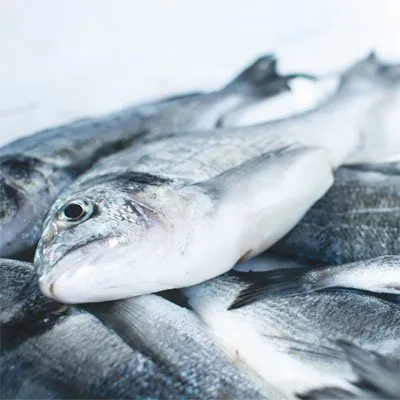In the past, there have always been infections from contaminated meat. Poultry in particular is considered to be at risk. Strict hygiene measures, regular checks and improved awareness are causing the numbers to decline.
Salmonella (Salmonella spp.): They are among the most common pathogenic bacteria in food. In 2019 there were more than 90,000 infections within Europe. Salmonella is found particularly often in meat (primarily poultry), in eggs and in non-pasteurized dairy products. Most recently, in 2021, frozen poultry meat from the UK led to more than 300 linked cases of salmonellosis in several European countries and Canada.
In Switzerland, salmonella is the second most common cause of foodborne diarrhea after campylobacter. However, the number of infections in poultry flocks in this country is declining – an indication that the legal safety mechanisms are working. Above all, the measures to combat the pathogen in laying hens have been decisively advanced since the 1990s.
Salmonella – a widespread pathogen
Salmonella occurs worldwide. The bacteria live, for example – just like E.Coli – in the gastrointestinal tract of various (farm) animals. The germs are robust and can also cope with strong temperature fluctuations and sub-zero temperatures. They multiply particularly frequently at temperatures between 20 and 40 degrees. In the summer months there are therefore particularly many salmonella infections (salmonellosis). They usually appear suddenly with severe diarrhea, nausea, vomiting, headaches and abdominal pain. The bacteria can have life-threatening effects in people with a weakened immune system, as well as in the elderly, pregnant women and children.
Those affected usually become infected by eating contaminated food. Poor hygiene such as dirty cutting boards or knives are also breeding grounds for pathogenic germs. Salmonella is one of the notifiable contagious diseases. They are transmitted from person to person through smear infections. Good kitchen hygiene, regular hand washing and heating food such as eggs or meat are recommended to protect consumers.
Particularly affected: pathogens in poultry meat
Poultry meat is considered risky. The animals can naturally contain pathogenic microorganisms such as Salmonella and Campylobacter. Contaminated water and feed, as well as infected animals that are asymptomatic, are common sources of Salmonella herd disease.
Infections in chickens are strongly influenced by transmission via the hatching egg. The pathogens are transferred to the egg and infect the chicks. The result: further infections in the hatchery. During slaughtering and processing, the salmonella finally get onto the meat products. If there is also a lack of hygiene in the production facilities, the germs have a good chance of surviving and multiplying.
Strict rules in Switzerland to protect against pathogenic germs
In recent years, the Swiss authorities have taken several measures to contain the problem. There are strict hygiene guidelines and quality controls, especially for poultry production. For example, every breeding farm is supported by a nationwide advisory service. In addition, training courses for poultry producers are carried out to raise awareness of the risk of infection and to implement appropriate precautionary measures. Poultry flocks are regularly checked for salmonella as part of a control program (TSV Articles 255-261).
In addition, the manufacturers have a duty: they must monitor their housing conditions on their own responsibility and, for example, prevent mice or birds from gaining access to feeding and water points. The stables must be disinfected regularly and strict hygiene guidelines must be observed during slaughter and processing. Poultry farmers who check their poultry for salmonella must also report the arrival of each flock in the animal traffic database (TVD).
Modern analysis methods reliably detect germs
Most manufacturers work with external providers to test their products. Special laboratories such as Biolytix use various analysis methods to detect salmonella. A common method is the cultivation of the germs on culture media in order to identify the isolated bacterial colonies. Pathogenic organisms can be identified particularly quickly (between 24 and 36 hours) using combined real-time PCR methods. Other, even more precise, time- and cost-efficient methods are on the rise. In cooperation with the Swiss Tropical and Public Health Institute (Swiss TPH), Biolytix is currently testing the implementation of cost-efficient next-generation sequencing analyzes (NGS). Using NGS, microorganisms can be analyzed extremely precisely and comprehensively; Germs can be detected reliably, quickly and efficiently.
Overall, the numbers in Switzerland are declining: The proportion of positive samples from Swiss poultry meat stocks is between 0.2 and two percent annually. The comprehensive surveillance program and the reliable self-control of the producers seem to be working. The percentages are significantly higher for imported poultry meat. On average, 15 percent of the samples are contaminated with salmonella each year.
Consistent hygiene measures, careful controls and suitable analysis methods will continue to be necessary in the future to minimize the risk of salmonella infections and to ensure the safety of poultry products.




